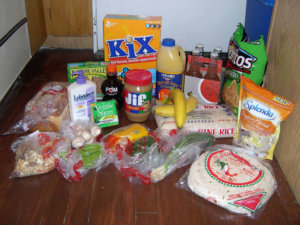The Grocery Market Has Moved Online
Published on May 22, 2018, at 8:57 a.m.
by Stephanie Zielinski.
In 1989, Peapod offered a service to deliver groceries to your door. People liked the idea so much that it was duplicated by Fresh Direct in 2000. These services were publicized by mail and T.V. commercials to get the attention of the audiences.

Today, marketing, advertising and public relations practitioners rely on consumers to create a buzz about products. We turn to social media to target our audiences, we connect with bloggers to get even closer to the niche, and we continue to collect data with every click to understand our consumers. This organic-style of PR has been very effective for online businesses.
In 2014, when Amazon expanded its services to include grocery goods, called Prime Pantry, everyone looked skeptically to see if the idea would succeed. When it did, it sparked hundreds of food-delivery services, new ways to advertise food brands, and the shopping experience was redefined.
This concept is not new, but the methods of item selection and delivery are. From the services above, which began in catalogues, to Amazon’s drone delivery system, the grocery game has evolved. But, what does this mean for brick-and-mortar stores?
The Food Marketing Institute (FMI) and Nielson recently did a study that “indicates that in as few as five-seven years, 70% of consumers will be grocery shopping online. Now, the estimated $100 billion spent, which is equivalent to every U.S. household spending $850 online for food and beverage annually, will occur by 2022 or 2024.”
As a college student, I have tried a new grocery delivery service each month. Getting to the grocery store before it closes at 8 p.m. is not always possible, and these online services have offered me an inexpensive and time-saving alternative to walking around aimlessly pushing a cart for over an hour.
How have traditional stores responded? In the case of Target, Kroger and Sam’s Club, they’ve opted to hire externally.
“Just this week [March 1, 2018], Sam’s Club signed a deal with Instacart through which the delivery service will make same-day grocery deliveries from Sam’s Club stores, initially in three markets. Target acquired delivery service Shipt in December and plans to roll out same-day delivery service to most Target stores in 2018. Walmart and Kroger continue to rapidly extend their networks of grocery collection points,” according a Forbes article by Deborah Weinswig.
Weinswig concludes that “these investments indicate that online grocery may be one of the rare markets where brick-and-mortar retailers — rather than Amazon — are actually setting the pace.”
However, I think it is just the opposite. I believe that the brick-and-mortar stores are trying to match the pace of the online options. Consumers will continue to use the services that allow us to do our shopping through a screen because they save time and prevent last-minute grabs of things we do not need.
Online supermarkets have caught our attention. We are seeing never-ending commercials for various meal planning services, online niche markets and new ways to pick up our groceries. Each of these requires a fleet of public relations practitioners to work on B2B relations for products, advertising and developing target audiences. As the internet continues to offer new services, PR is offered new corners of the market to prove how useful our skill set can be.




